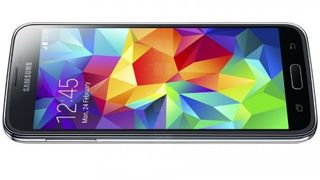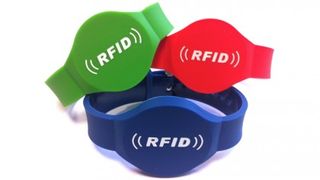Injected electronics: The next wave of wearable tech?
Will we disappear inside ourselves?
Is this biohacking?
Mention injected electronics and embedded wearables and talk of biohacking and cyborgs naturally follows, but this isn't about creating superior beings. "Biohacking varies greatly from the practice of inserting implants to gene sequencing, and working with plants and bacteria to blood and electronic sensors," says Dr Kevin Curran, IEEE Technical Expert, who thinks that practitioners of biohacking mostly aspire to help disabled people. "However, biohackers do share a belief in the power of technology to enhance our beings," he says.
Researchers at the University of California in San Diego recently developed a bio-tattoo that monitors sweat. "This can be classified as bio-hacking as these sensors, which are applied to the skin, can track an athlete's chemical balance to gauge his physical activity," says Curran.

Is this a natural progression from self-quantification?
"Implants could be used to monitor activities and extend the current approach of wearables in health and wellbeing," says Johnson. "Implants can offer feedback for consumers, providing insight into hormone levels, adrenaline release, lactose build-up, hydration and nutrition."
In recent years wearable technology and apps have become a key way of getting people to take more interest in being active. "Health apps are one of the best sellers in the app store and the self-quantification movement is growing," says Curran, who thinks that demand for measuring our bodies will only grow. "We are seeing more wrist-wrapped devices with increased processing and power in addition to many more sensors for reading heart rate, bio data, steps taken, estimated calories burned, quality of sleep, and more."
He gives the example of the Samsung Galaxy S5, which can read blood flow through its camera. The Apple Watch can read heart-rate, too. "However, these are limited and subject to lossy readings," he says. An injected device needs to be highly accurate and reliable if it's to serve any medical purpose.

Could we use implants as ID or to make payments?
Carrying smart cards to use public transport and using phones for Apple Pay might seem like thoroughly modern tech, but a lot of ID-based transactions could very easily be done via implants. "Several services could be enabled if you think of the implanted electronics as a replacement for some of the gadgets or things we carry with us today, for example for identification and payment," says Kamat. "A tiny chip placed subcutaneously in your wrist could serve as your credit card or driver's licence, for example."
However, it could get a lot more subtle. "Implanted electronics can allow better, more accurate sensing of various physiological parameters, but it can also enable us to effect reactions or movement in response to things that the body is not capable of sensing, such as certain frequencies of sound or light," says Kamat.
Are you a pro? Subscribe to our newsletter
Sign up to the TechRadar Pro newsletter to get all the top news, opinion, features and guidance your business needs to succeed!

It's not all about us. The ability to inject electronics applies to all living organisms, not just people. "There is potential for non-medical applications, particularly involving environmental monitoring of plant matter in rainforests," says Johnson. "The information gained from the technology would help the industry better understand particular environmental impacts and adapt approaches in other ecosystems."
But, mostly, it is about us. "Ultimately we want our devices to disappear into our surroundings and just 'know' what to do in order to make our lives more bearable," says Curran. "Where better to disappear than inside ourselves?"
Jamie is a freelance tech, travel and space journalist based in the UK. He’s been writing regularly for Techradar since it was launched in 2008 and also writes regularly for Forbes, The Telegraph, the South China Morning Post, Sky & Telescope and the Sky At Night magazine as well as other Future titles T3, Digital Camera World, All About Space and Space.com. He also edits two of his own websites, TravGear.com and WhenIsTheNextEclipse.com that reflect his obsession with travel gear and solar eclipse travel. He is the author of A Stargazing Program For Beginners (Springer, 2015),

HP launched a very promising ultra portable XPS13 killer laptop — the 1kg EliteBook 635 Aero G11 is only available in Japan with seemingly no plans for a global launch, but why?

Intel finally brings its latest laptop CPU tech to other platforms but desktop users are shunned — Meteor Lake-PS architecture fuses Core Ultra and LGA socket, targets edge systems instead
Most Popular


